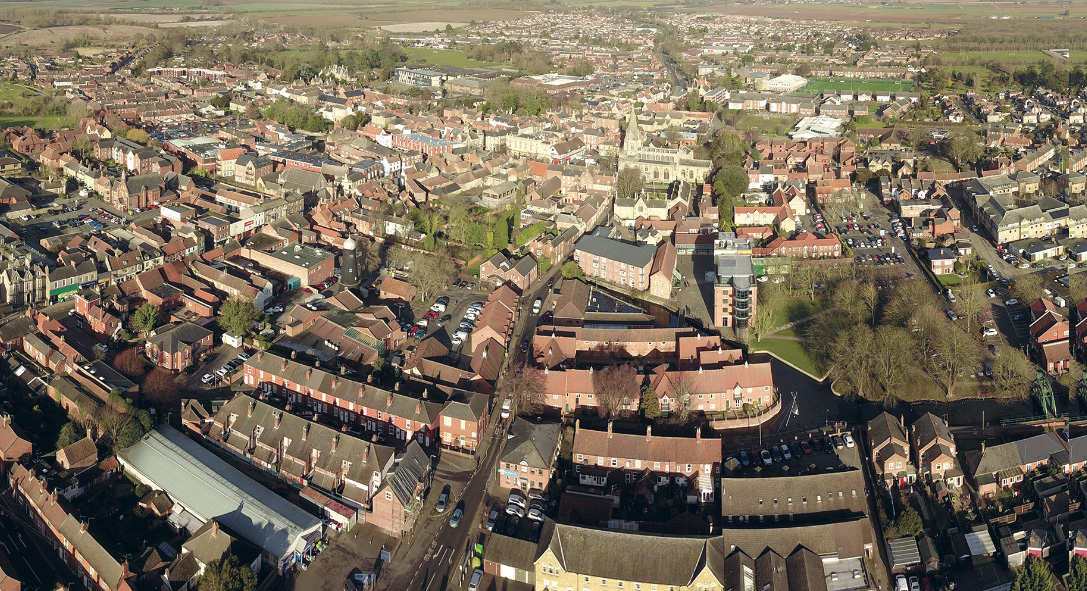
Sleaford in Panorama
Sleaford’s 18,000-strong population has made it the largest settlement in North Kesteven. It’s an ancient town with a rich history, evident in its construction, and was owned by the Carre family in the 16th century for over 100 years…
How a town grows and changes over hundreds of centuries continues to fascinate me and Sleaford is the perfect example.
It was a tribal centre for the Corieltauvi in the first centuries BC and AD. Evidence of Roman and Anglo-Saxon settlements has been uncovered; the town had a court and market.
The first settlement in Sleaford formed in the Iron Age where a prehistoric track crossed the River Slea.

Sleaford Castle was constructed in the 12th century for the Bishops of Lincoln, who owned the manor. Granted the right to hold a market in the mid-12th century, Sleaford developed into a market town and became locally important in the wool trade.
From the 16th century, the town’s landowners were the Carre family, who operated tight control over the town, and it grew little in the early modern period.
The manor passed from the Carre family to the Hervey family by the marriage of Isabella Carre to John Hervey, 1st Earl of Bristol, in 1688. The town’s common land and fields were legally enclosed by 1794, which gave ownership mostly to the Hervey family; this coincided with making the Slea into a canal, and heralded the first steps towards modern industry.
The Sleaford Navigation brought economic growth until it was superseded by the railways in the mid-1850s. In the 20th century, the sale of farmland around Sleaford led to the development of large housing estates.






